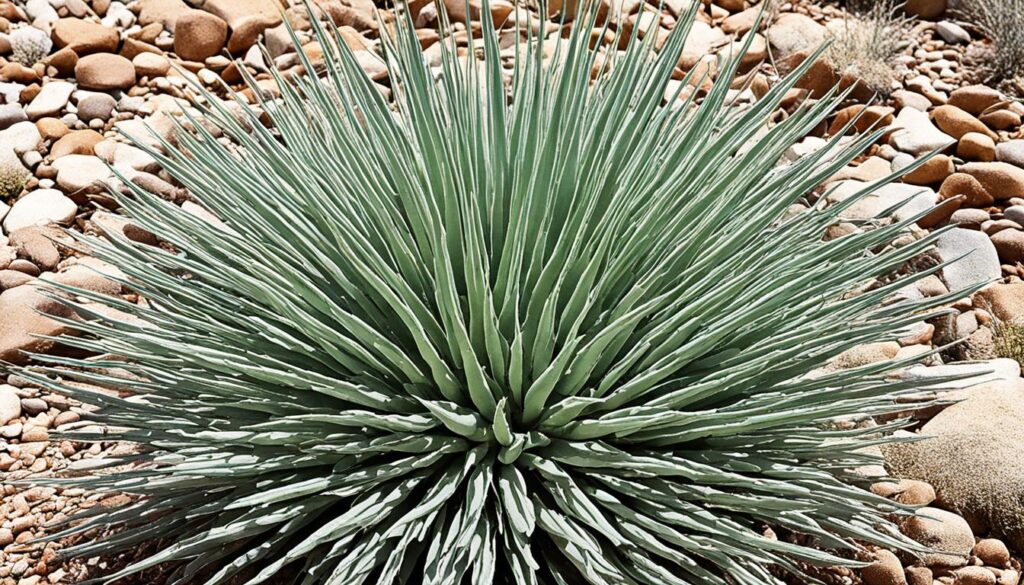In this article, we will explore the fascinating world of “X” symbols and discover words that start with the letter “X.” From greater than and less than symbol words to unique terms like xanthic and xenon, we will uncover a lexical treasure map with words that begin with the enigmatic letter “X.”
But first, let’s understand the significance of “X” and its representation in greater than and less than symbols. “X” is often used as a variable in mathematics and signifies an unknown value. In symbols, “>” represents greater than, while ”
Now, let’s embark on an adventure into the world of “X” and explore the intriguing words that begin with this distinctive letter.
Key Takeaways:
- Greater than and less than symbols are commonly used in mathematics to represent comparison.
- Xanthic describes something that has a yellow or yellowish-brown color.
- Xenon is a chemical element with various applications in science and technology.
- Xerophytes are plants that have adapted to survive in dry environments.
- Xenophile refers to a person who is attracted to foreign cultures or people from different countries.
Unleashing the Power of “X”
Before we dive into the specific words, let’s understand the significance of “X” and its representation in greater than and less than symbols. “X” is often used as a variable in mathematics and signifies an unknown value. In symbols, “>” represents greater than, while “<” represents less than. Together, they form an essential part of mathematical equations.
When it comes to using “X” in equations, it’s important to remember that it acts as a placeholder for a value that needs to be determined. Think of it as a mystery waiting to be solved, a puzzle piece missing from the equation.
Let’s take a closer look at these powerful symbols:
Greater Than Symbol (>)
The greater than symbol, >, is used to compare two values, with the value on the left being greater than the value on the right. It helps establish relationships of size, quantity, or magnitude.
Less Than Symbol (<)
The less than symbol, <, is used to compare two values, with the value on the left being less than the value on the right. It also helps determine relationships of size, quantity, or magnitude.
| Symbol | Meaning | Example |
|---|---|---|
| > | Greater than | 5 > 3 (5 is greater than 3) |
| < | Less than | 2 < 7 (2 is less than 7) |
The Power of “X”
The symbol “X” and its representation in greater than and less than symbols play a vital role in mathematical equations. They allow us to compare values, make logical judgments, and solve equations by finding the missing piece of the puzzle. By understanding and harnessing the power of “X,” we unlock a world of mathematical possibilities.
Xanthic: Vibrant and Yellow
One of the intriguing words that starts with “X” is xanthic. Derived from the Greek word “xanthos,” meaning yellow, xanthic describes something that has a yellow or yellowish-brown color. From sunflowers to vibrant autumn leaves, xanthic hues bring warmth and vibrancy to our surroundings.
When we think of the color yellow, images of bright sunshine and cheerful flowers often come to mind. Yellow is associated with happiness, positivity, and energy. It is a color that evokes feelings of joy and optimism, making it a popular choice for various purposes.
In nature, xanthic tones are prevalent in flora and fauna, adding a touch of radiance and beauty to the world around us. Sunflowers, with their vibrant yellow petals, exemplify the essence of xanthic. These magnificent flowers not only symbolize happiness but also stand as a representation of loyalty and longevity.
“The yellow that speaks of joy, the sunflowers dance in the breeze, their xanthic petals shining brightly.” – Anonymous
Autumn, too, reveals the magic of xanthic hues. As the leaves change colors and prepare for winter, vibrant yellow tones become a spectacle to behold. The combination of a xanthic palette with shades of orange and red creates a picturesque landscape that captivates our senses.
Whether it’s an artist’s paintbrush or a designer’s color palette, xanthic shades hold a special place in our perception. They are a reminder of the splendor found in nature and a source of inspiration for creative expressions.
To truly appreciate the allure of xanthic, let’s take a moment to envision a world without yellow. Imagine a garden devoid of sunflowers, where autumn leaves lack their vibrant glow. The absence of xanthic tones would leave a void, robbing us of the joy and warmth these colors bring to our lives.
Next time you encounter the word xanthic, remember its connection to the vivid and cheerful hue of yellow. Embrace the vibrancy it represents and allow its presence to brighten your day.
Xenon: Illuminating the World of Science
Xenon is a chemical element with the atomic number 54. It is a colorless, odorless, and heavy gas that occurs naturally in small quantities in our atmosphere. This noble gas holds a special place in scientific research and various applications, including lighting, lasers, and medical imaging.
Applications of Xenon
Xenon’s unique properties make it invaluable in a range of scientific fields. Let’s explore some of its prominent applications:
- Lighting: Xenon is commonly used in specialized lamps, such as xenon arc lamps and high-intensity discharge (HID) lamps. These lamps produce a bright, white light and are used in stadium lighting, projector systems, and automotive headlights.
- Lasers: Xenon gas lasers play a crucial role in various scientific and industrial applications. They are used in research laboratories, medical treatments, and barcode scanners, among other fields.
- Medical Imaging: Xenon has been used in medical imaging techniques like xenon-enhanced computed tomography (CT) scans. It helps provide detailed images of lung ventilation and blood flow.
With its diverse applications, xenon continues to push the boundaries of scientific discovery and technological advancements.
| Property | Value |
|---|---|
| Atomic Number | 54 |
| Atomic Symbol | Xe |
| Atomic Weight | 131.293 |
| Phase at Room Temperature | Gas |
| Melting Point | -111.74°C |
| Boiling Point | -108.099°C |
Xerophyte and Xylan: Unveiling Botanical Wonders
When it comes to plants that have mastered the art of survival in dry environments, xerophytes take center stage. These remarkable botanical wonders have evolved and adapted to thrive in arid conditions, where water is scarce and the sun beats relentlessly. Among the most renowned xerophytes are cacti and succulents, which have developed unique strategies to conserve water and withstand extreme temperatures.
One of the key features of xerophytes is their ability to store water efficiently. Their thick, fleshy stems and leaves serve as reservoirs, enabling them to endure long periods of drought. Additionally, xerophytes often have specialized characteristics such as waxy coatings or spines, which help reduce water loss through transpiration.

Adaptations of Xerophytes
| Adaptations | Examples |
|---|---|
| Reduced leaf surface area | Cacti, Agave |
| Succulent stems and leaves | Aloe, Jade Plant |
| Waxy coatings | Echeveria, Haworthia |
| Spines or thorns | Opuntia, Barrel Cactus |
Another crucial component within plants’ cellular structure is xylan. Found in the cell walls of various types of plants, xylan plays a vital role in providing structural support. As a complex carbohydrate, it gives strength and rigidity to plant cells.
Research has shown that xylan acts as a binding agent, reinforcing the cell walls and preventing them from collapsing under mechanical stress. It also assists in regulating water movement throughout the plant, ensuring that the xerophytes efficiently utilize the limited water resources available in their harsh environments.
In conclusion, xerophytes are botanical marvels that have adapted to survive in some of the most challenging and inhospitable conditions on Earth. Their ability to conserve water and thrive in arid environments is a testament to the incredible resilience of nature. Additionally, xylan’s role in strengthening plant structures highlights the interconnectedness of the plant kingdom and the diverse adaptations it has developed over millions of years.
Xenophile, Xyst, and Xeme: Exploring a Linguistic Adventure
In this final section of our linguistic journey through the letter “X,” we uncover some intriguing words that may be less familiar to many. Let’s dive into these unique terms and broaden our lexical horizons.
Firstly, we have “xenophile,” a word derived from the Greek roots “xenos” meaning “foreigner” and “philein” meaning “to love.” A xenophile is someone who is attracted to foreign cultures or individuals from different countries. Their curiosity and appreciation for diverse customs and traditions make them true global citizens.
Next, we encounter the word “xyst,” which originates from ancient Greece. A xyst refers to a long, covered walkway typically bordered by trees or columns, creating a serene path for strolling or contemplation. Imagine wandering gracefully through a grand xyst, surrounded by the tranquility of nature.
Finally, we encounter the fascinating word “xeme.” This term describes a seabird native to the Arctic that belongs to the gull family. With its unique characteristics and adaptability to icy environments, the xeme represents the resilience and beauty of nature in the harshest of conditions.
FAQ
What are greater than and less than symbol words that start with “X”?
There are no commonly used words that start with “X” specifically related to the greater than and less than symbols.
What does “xanthic” mean?
“Xanthic” is an adjective that describes something as having a yellow or yellowish-brown color.
What is xenon?
Xenon is a chemical element with the atomic number 54. It is a colorless, odorless, and heavy gas that occurs naturally in small quantities in our atmosphere.
What are xerophytes?
Xerophytes are plants that have adapted to survive in dry environments by developing unique characteristics to conserve water, such as cacti and succulents.
What is xylan?
Xylan is a complex carbohydrate found in the cell walls of plants, playing a crucial role in their structural support.
What is a xenophile?
A xenophile refers to a person who is attracted to foreign cultures or people from different countries.
What is a xyst?
A xyst is an ancient Greek word used to describe a long, covered walkway lined with trees or columns.
What is a xeme?
A xeme is a seabird native to the Arctic that belongs to the gull family.










